The Monaco di Baviera Classic is one of the most demanding ultracycling events that takes place in the Alps. With a route spanning over 1500 km and more than 30,000 meters of elevation gain, this challenge tests not only the physical endurance but also the mental toughness of participants. Especially the famous alpine passes, which are climbed during the event, are a true test for every rider. In this article, we introduce you to the legendary passes featured in the Monaco di Baviera Classic. Additionally, you will find links to Wikipedia for further information and a selection of photos that showcase the beauty and challenge of these routes. More photos and inspiration for cycling in South Tyrol and climbing passes here 👉 audax-franconia.de/cycling-southtyrol.
Reschen Pass (1504 m)
The Reschen Pass, at 1504 m, is the first pass on the route and marks the entrance into the Alps. It connects the Vinschgau valley in South Tyrol (Italy) with the Austrian Tirol and is known for the Reschensee, whose iconic church tower rises from the water. This pass offers a stunning view of the upper Vinschgau valley and serves as the perfect introduction to the rest of the journey.
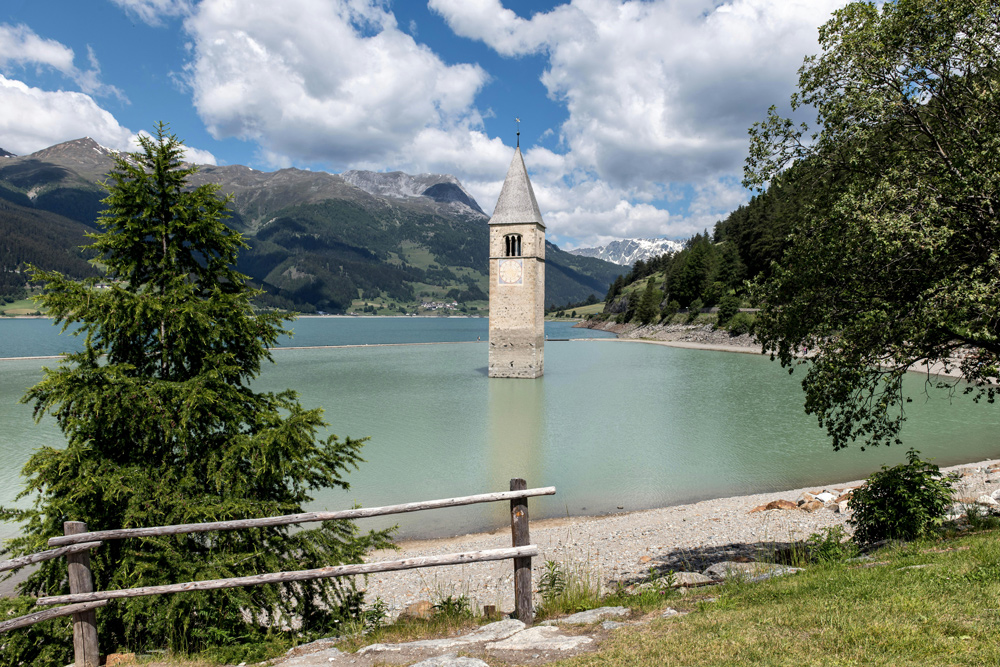
Wikipedia source: Reschen Pass
Passo Stelvio (2757 m)
The Passo Stelvio is undoubtedly one of the most famous and spectacular alpine passes. At 2757 m, it is one of the highest motorable mountain passes and is famous for its 48 hairpin turns that twist their way up to the summit. This pass has been featured multiple times in major Italian races, such as the Giro d’Italia, and challenges riders with its steep ascents, requiring both physical endurance and strategic riding.
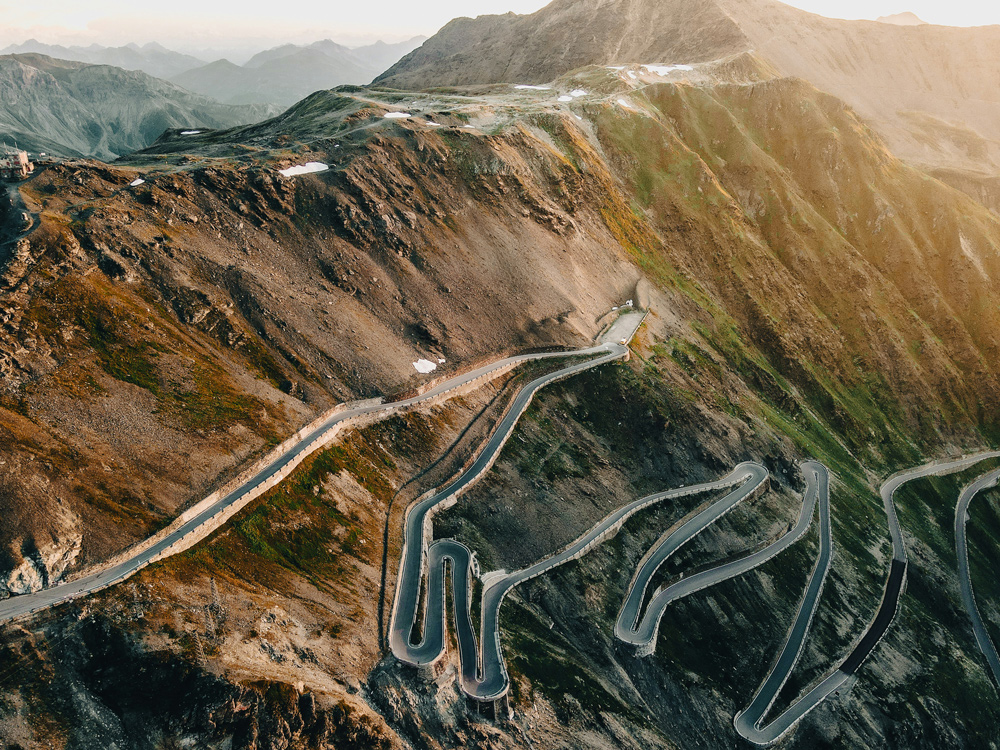
Wikipedia source: Passo Stelvio
Passo Mortirolo (1852 m)
The Mortirolo Pass is infamous for its steep sections, with gradients reaching up to 18%. This pass is not just a physical challenge, but also a mental battle. It has become one of the hardest stages in the Giro d’Italia and is a must for any ambitious cyclist. Standing at 1852 m, the Mortirolo offers not only a tough climb but also a beautiful view of the Italian Alps.
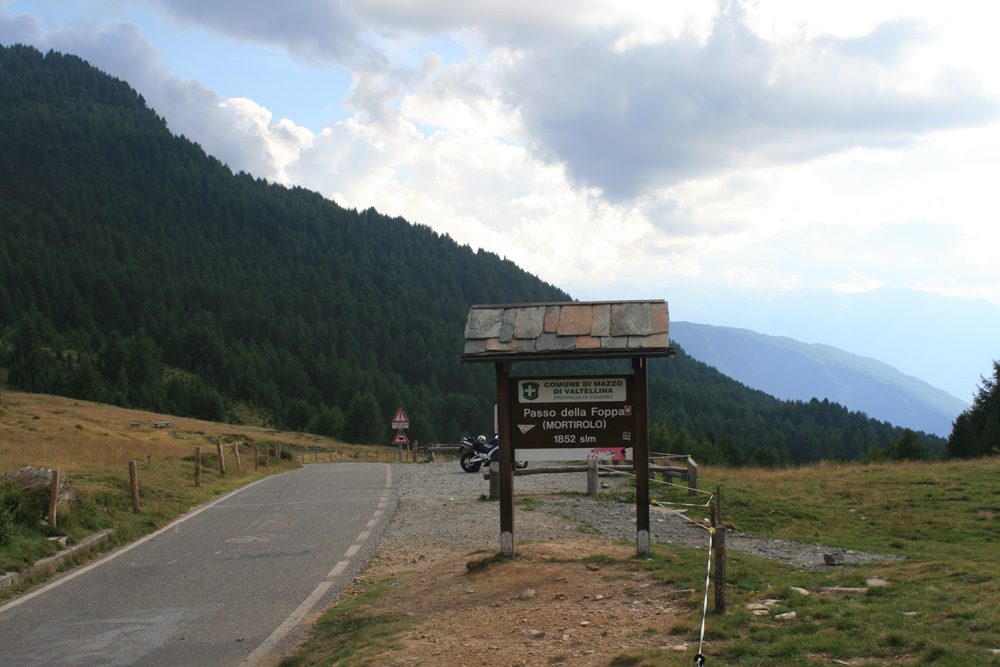
Wikipedia source: Passo Mortirolo
Passo Gavia (2621 m)
The Passo Gavia, standing at 2621 m, is one of the highest and most remote passes in the Alps. The ascent is long and steady, but the rough mountain landscapes and pristine nature offer an exceptional backdrop. A highlight of this pass is the view of the Gavia Glacier, which can be breathtaking when the weather is clear.
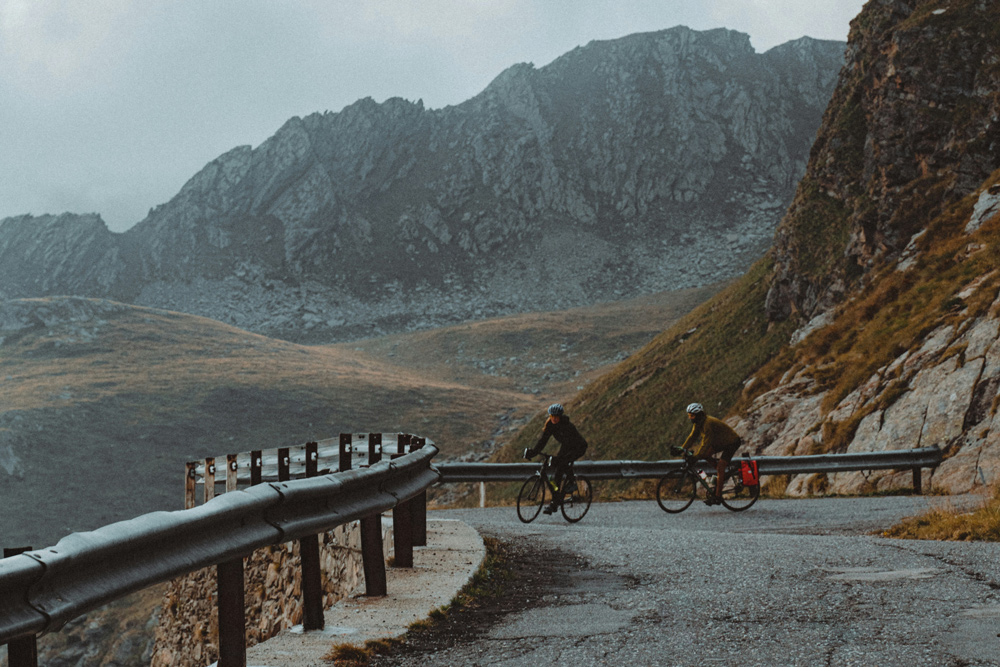
Wikipedia source: Passo Gavia
Passo Tonale (1883 m)
The Passo Tonale, at 1883 m, connects the Trentino region with Lombardy and leads alongside the Adamello Glacier. The climb is steady but not overly steep, making it a welcome break from the more challenging passes. The route offers spectacular views of the surrounding mountains and serves as a beautiful transition to the next set of challenges.
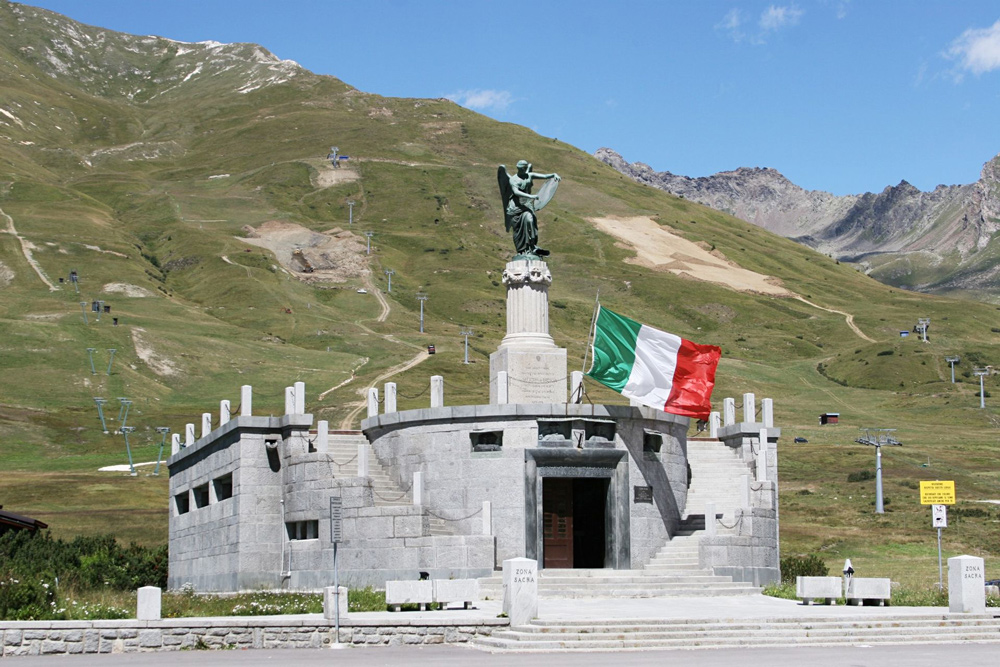
Wikipedia source: Passo Tonale
Passo Manghen (2042 m)
The Passo Manghen, at 2042 m, is less known than some of the other passes but no less demanding. It leads through a secluded mountain landscape, giving riders the feeling of being immersed in nature. The climb is long and steady, offering a challenging ascent, but the solitude and natural beauty make the effort worthwhile.
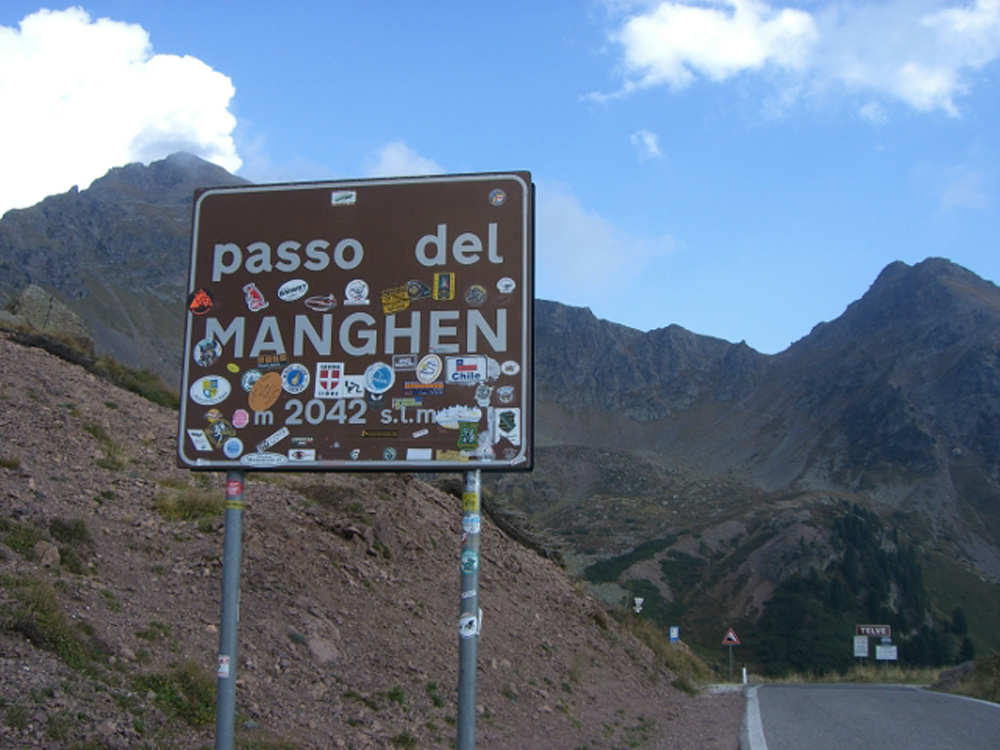
Wikipedia source: Passo Manghen
Passo Sella (2218 m)
The Passo Sella, standing at 2218 m, is one of the most famous and popular passes in the Dolomites. It offers breathtaking views of the iconic Dolomites and is a favorite among cyclists. The climb is moderate, but the pass is especially challenging due to its location and the stunning scenery surrounding it.
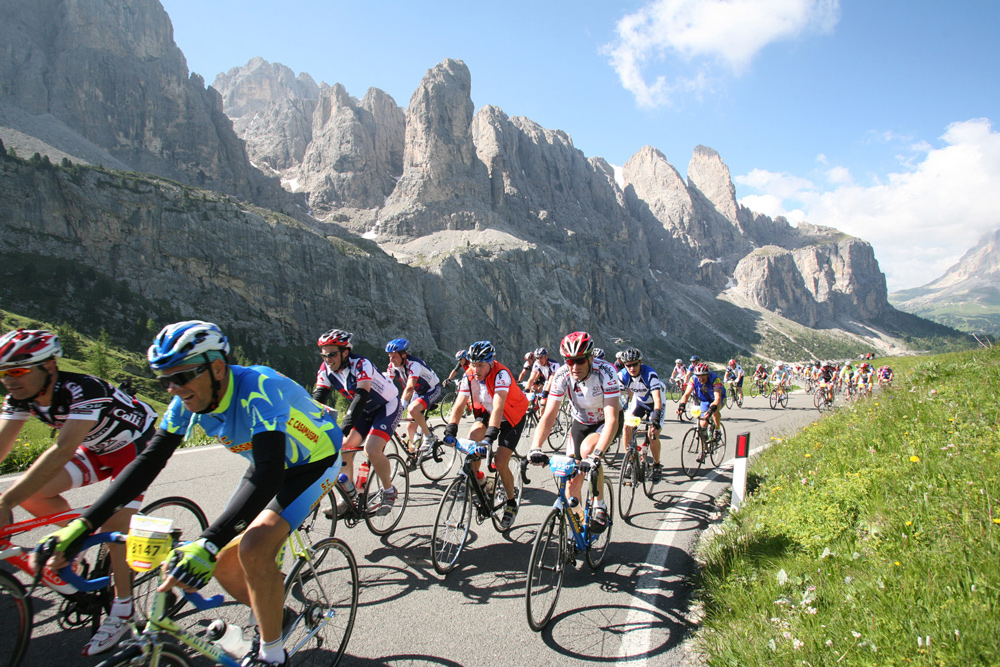
Wikipedia source: Passo Sella
Passo Gardena (2136 m)
The Passo Gardena, at 2136 m, connects the Val Gardena with Alta Badia and traverses a picturesque route with steep climbs and dramatic rock formations. The pass is not only demanding but also a masterpiece of nature, captivating many riders with its beauty.
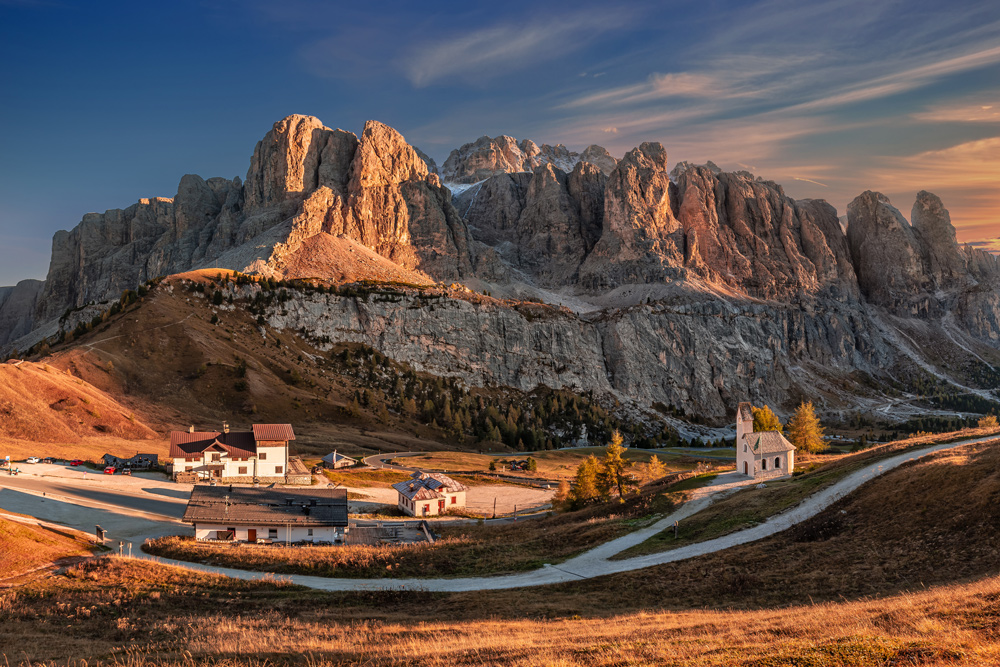
Wikipedia source: Passo Gardena
Passo Pordoi (2239 m)
The Passo Pordoi, at 2239 m, is one of the most well-known and iconic passes of the Dolomites. It is often referred to as the „King of the Dolomites“ and is famous for its steep ascents and spectacular views. The climb is long, but the summit offers a stunning panoramic view of the surrounding peaks.
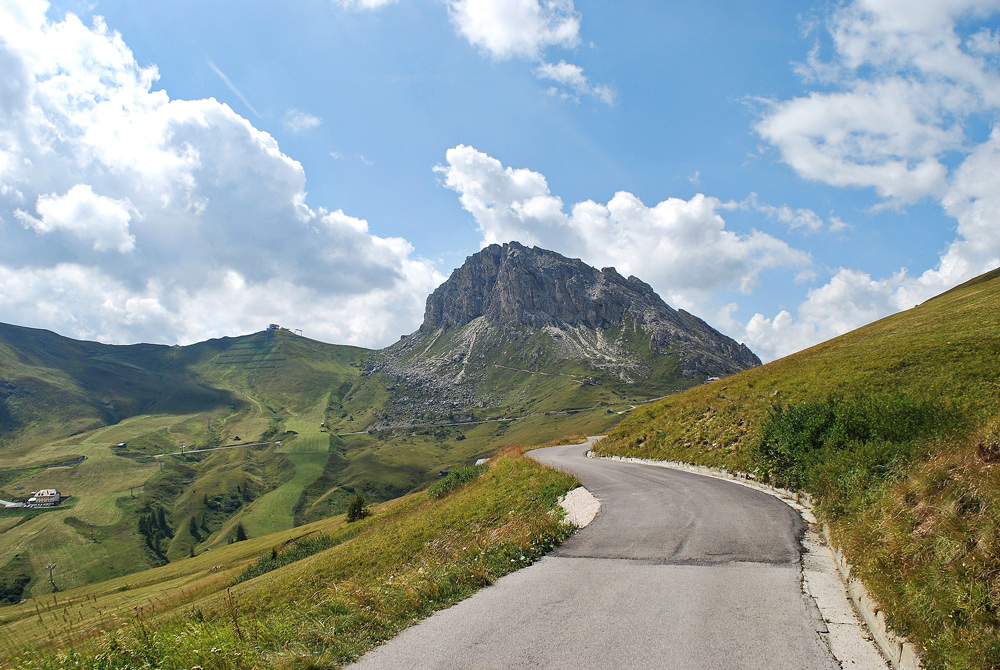
Wikipedia source: Passo Pordoi
Additional Passes of the Monaco di Baviera Classic
In addition to the aforementioned passes, the route also includes many other legendary climbs, such as Passo Valparola (2168 m), Passo Fedaia (2057 m), Passo Giau (2236 m), and the famous Monte Zoncolan (1750 m), which features extremely steep gradients of up to 22%, making it a particularly tough challenge. Other notable climbs include Passo Pramollo (1530 m), Hochtor Pass (2504 m), Edelweißspitze (2571 m), and the final ascent to Kitzbüheler Horn (1996 m).
The Monaco di Baviera Classic is an epic journey that thrives on both the beauty of the Alps and the physical challenge. Each of these passes offers riders not only a challenge but also an unforgettable experience that they can look back on with pride.


